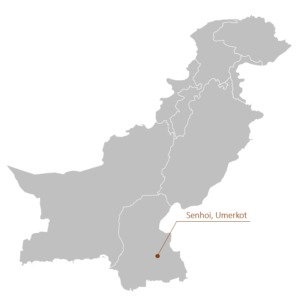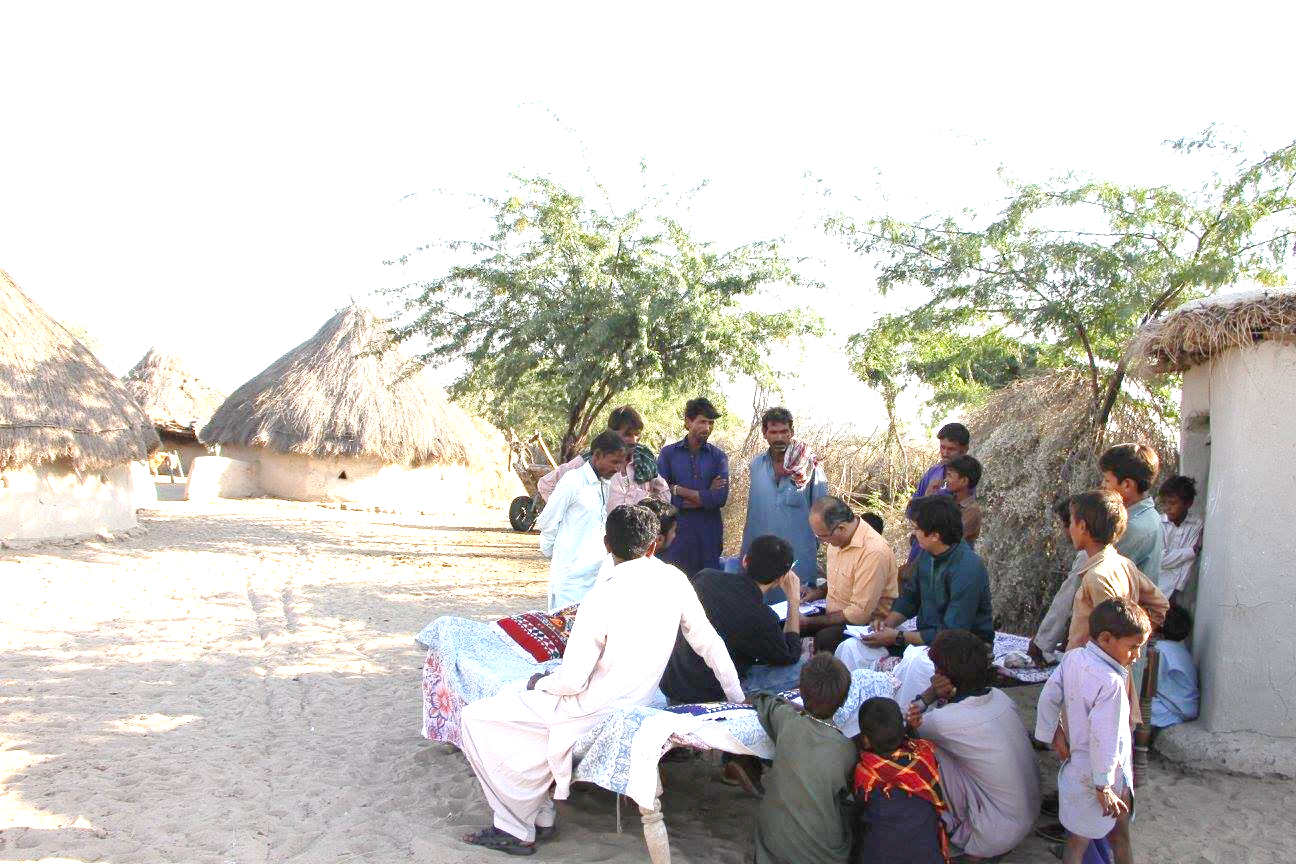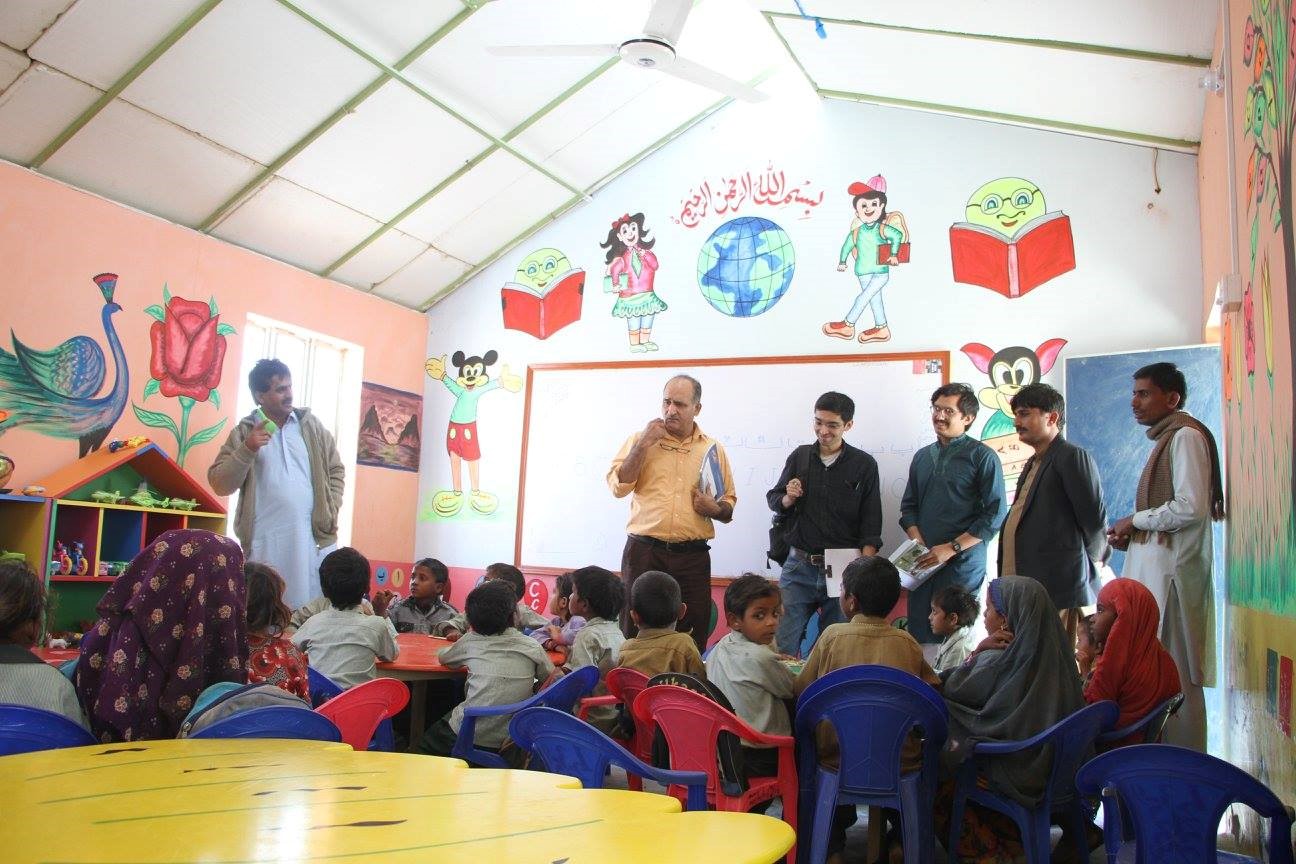By Hassaan Idrees
IEEE SIGHT Karachi Chapter
 Hema, an 8-year-old girl, is one of five siblings living in the village of Senhoi, located close to the Mirpurkhas-Umerkot highway, a perennially drought ridden area of southern Pakistan. Every day, she wakes up before the crack of dawn to fetch water from a hand pump at a distance of 3km (2 miles). It is a winding, nasty route that she must maneuver in the dark for there are no streetlights, and snakes and wild dogs run amok in the desert bushes. Panting and sweating on her return, she gets ready to go to a dilapidated public school situated 1.6km (1 mile) away. Hema has trouble finishing her homework under the grim gaslight at home: it’s inadequate, expensive and dangerous. As her father runs a small store in the village, however, she is one of the fortunate few to actually attend school; the vast majority of children in Senhoi have to assist their families with farming or woodcutting to make ends meet. Hema belongs to an unbelievably impoverished community: more than 46 percent of the people in Umerkot, out of more than 700,000, live on less than (USD) $1.90 a day. Rural female literacy is less than 10 percent in this district. Access to the power grid is limited to the main town and larger villages. Smaller villages and hamlets have power outages for as long as 18 hours a day, and some are not connected to the grid at all. With little or no power, local economies suffer and life is tough.
Hema, an 8-year-old girl, is one of five siblings living in the village of Senhoi, located close to the Mirpurkhas-Umerkot highway, a perennially drought ridden area of southern Pakistan. Every day, she wakes up before the crack of dawn to fetch water from a hand pump at a distance of 3km (2 miles). It is a winding, nasty route that she must maneuver in the dark for there are no streetlights, and snakes and wild dogs run amok in the desert bushes. Panting and sweating on her return, she gets ready to go to a dilapidated public school situated 1.6km (1 mile) away. Hema has trouble finishing her homework under the grim gaslight at home: it’s inadequate, expensive and dangerous. As her father runs a small store in the village, however, she is one of the fortunate few to actually attend school; the vast majority of children in Senhoi have to assist their families with farming or woodcutting to make ends meet. Hema belongs to an unbelievably impoverished community: more than 46 percent of the people in Umerkot, out of more than 700,000, live on less than (USD) $1.90 a day. Rural female literacy is less than 10 percent in this district. Access to the power grid is limited to the main town and larger villages. Smaller villages and hamlets have power outages for as long as 18 hours a day, and some are not connected to the grid at all. With little or no power, local economies suffer and life is tough.

The IEEE SIGHT Karachi team discusses issues in access to energy with community representatives who, sadly, did not include women. Empowerment of women is desperately needed and projects like “Empowering Umerkot” enable women to be able to work on their handicrafts in the evening under the solar-powered lighting, and sell their merchandise in larger towns.
SIGHT volunteers continue to make waves throughout the IEEE world in areas as diverse and impactful as access to clean water and energy, agriculture and food security, education, health, and the empowerment of women. Located within Pakistan, a low-income country with plenty of opportunities in these areas, the IEEE Karachi Section SIGHT focuses on delivering reliable access to health and energy. In 2013, the SIGHT volunteers set up a telemedicine network for rural communities of Mithi, district Tharparkar, in the Sindh province. While the project successfully achieved the outcome of building a health clinic for patients from remote communities with quality medical supplies and a physician, it was a first for the local SIGHT volunteers, and a lot of operational lessons were learned during and after the execution.

The IEEE SIGHT Karachi team saw that kids from grades 3 to 5 were clumped in the same classroom due to a lack of teachers at public schools like this one near Senhoi. “Empowering Umerkot” hopes to train the existing teachers and bring new ones from nearby towns.
The geography and the economy of the Sindh province revolves around the Indus River that flows through its heartland until it reaches the Arabian Sea. Communities living in Umerkot and Tharparkar districts are removed from the river and have arid weather with near-desert landscapes. In 2016, the SIGHT volunteers initiated a collaboration with the Association for Water, Applied Education, and Renewable Energy (AWARE), a local NGO operating in these communities for more than 14 years. AWARE works with the local government and aid agencies to solve problems at the micro level. Volunteers from SIGHT Karachi conducted site assessment visits with AWARE in late 2016 to assess where they could use their skills to benefit the underserved communities. This led to the start of a new project to deliver access to energy with technical guidance from senior patrons of the IEEE Smart Village initiative. By early 2017, survey results were compiled, technical designs were evaluated and a comprehensive plan was shared with the SIGHT committee for approval. Within a few months the Chapter received funding, and as of June 2017, plans are underway for procurement and installation of solar home systems that can light up Hema’s home to allow her to study in the evening, and make her early morning walk safe from wild animals.

